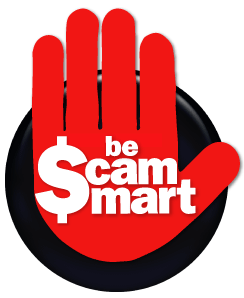]]>
In a world where you can do virtually everything online, one has to wonder where all the information is going, and how it is being protected. High speed Internet access and devices like Blackberry’s give us constant access to the Internet, and therefore, the ability to exchange information via the World Wide Web. But with this convenience also comes a price.
Local and national news stations run stories frequently about hackers that have corrupted someone’s database leaving millions of facing the possibility of identity theft. How do you go about protecting your identity when you’re online? And, is it really safe to do business online?
#1- Install a firewall on your computer. A firewall is software that installs on your computer to prevent unauthorized access to your computer. Without a firewall in place, you become exposed to hackers while surfing the Internet or simply having your computer connected to the Internet. There are many available, both free and paid, stand-alone or part of a package.
#2 – Use anti-virus software to avoid contracting a virus which can monitor your computer habits. Remember, anti-virus software is usually an annual subscription, don’t let your subscription expire.
#3 – Don’t use the same password for all of your online accounts. It can seem tempting to keep them all the same just for the sake of simplicity, but if you do, and a hacker gains access to your desktop, you may find that they are able to also gain access to all of your personal accounts.
#4 – Use spam filters in your email. Most hosted email solutions now have anti-spam solutions. If they offer it, use it!
#5 – Avoid Email Scams. – Different than spam, email scams use social engineered methods to convince you to trust the sender. Often these scams talk about large sums of money that need to be deposited in your bank account. If you respond, you will begin emailing with a live person, maybe for months, that will work to gain your trust and then steal your money through gaining access to your bank account.
#6 – Don’t ever click links in emails from senders you do not know; this is one of the easiest ways for hackers to gain access to your information.
#7 – Make sure websites you visit are secure. These are easily distinguishable just by glancing at the toolbar on your browser. A URL that begins with ‘Https’ indicates a secured and encrypted site.
#8 – Beware of phishing. Phishing emails are those that look like emails from reputable sites like PayPal, eBay and even your bank, but are designed specifically to steal your identity. The hope is that you will read the email, panic at its information and click on a link within to verify your account details. The website you visit appears as being from the vendor and you are asked to enter your personal information to verify your account. Once you do this, you will find your account at a zero balance within days. One way to avoidphishing is to avoid clicking the embedded link in the email and instead type in the organizations official URL in your browser and login on the official page.
#9 – Watch out for misdirected urls. When you type in a misspelled URL, you can be redirected to a bogus website, although it looks authentic. Often you are asked tologin with your legitimate credentials, which are captured by the bogus site. Then you are often given an error notice that the site cannot process your request and to return at a later date. This buys time for the criminals to take your stolen credentials, visit the legitimate site, and drain your bank account.
Keeping your identity safe online takes work and persistence, but it’s worth it. The only certainty when dealing with identity theft is that the battle will never end. As the hackers become savvier, the solutions will become more high-tech and you will need to stay on top of what’s current. Common sense plays a large role in keeping you and your family safe from online identity thieves.







